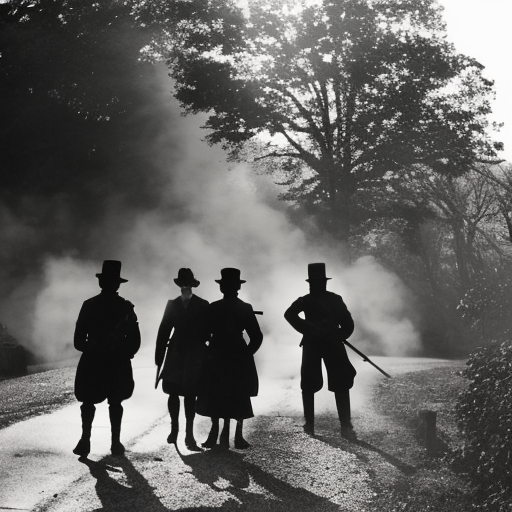Summary:
John Brown’s raid on Harpers Ferry was a pivotal event in American history that took place on October 16-18, 1859. Brown, an abolitionist, led a group of 21 men in an attempt to seize the federal arsenal at Harpers Ferry, Virginia (now West Virginia), with the goal of starting a slave rebellion. The raid ultimately failed, but it intensified the national debate over slavery and is considered a precursor to the American Civil War.
The Background:
John Brown was a fervent abolitionist who believed that armed insurrection was necessary to end slavery in the United States. He had previously been involved in violent conflicts in Kansas, where he and his sons fought against pro-slavery forces. Brown’s experiences in Kansas convinced him that a larger-scale rebellion was needed to achieve his goals.
The Raid:
On the night of October 16, 1859, Brown and his men crossed the Potomac River and quietly made their way to Harpers Ferry. Their plan was to capture the federal arsenal, arm the local enslaved population, and spark a widespread uprising against slavery. However, their initial success was short-lived. The raiders were soon surrounded by local militia and forced to take refuge in the arsenal’s fire engine house, later known as John Brown’s Fort.
The Response:
News of the raid spread quickly, and both the state and federal governments responded with force. U.S. Marines, led by Colonel Robert E. Lee and Lieutenant J.E.B. Stuart, were dispatched to Harpers Ferry to put down the rebellion. On the morning of October 18, they stormed the fire engine house and captured Brown and his surviving men. Ten of the raiders were killed, including two of Brown’s sons.
The Trial and Execution:
John Brown and his surviving followers were quickly tried for treason, murder, and conspiracy. Brown used the trial as a platform to denounce slavery and defend his actions. Despite his impassioned speeches, he was found guilty and sentenced to death. On December 2, 1859, Brown was hanged in Charles Town, Virginia (now West Virginia).
The Impact:
The raid on Harpers Ferry had a profound impact on the nation. It heightened tensions between the North and the South, as many Southerners saw it as evidence of a widespread Northern conspiracy to incite slave rebellions. In the North, Brown was hailed as a martyr and a hero by abolitionists, who saw his actions as a necessary step in the fight against slavery.
The Legacy:
John Brown’s raid on Harpers Ferry is often seen as a precursor to the American Civil War. It further polarized the nation and contributed to the growing divide between the North and the South. Brown’s willingness to use violence in pursuit of his goals foreshadowed the bloodshed that would come in the years ahead.
Conclusion:
John Brown’s raid on Harpers Ferry was a failed attempt to spark a slave rebellion, but its impact on American history cannot be overstated. It intensified the debate over slavery, deepened the divide between the North and the South, and ultimately played a role in the outbreak of the Civil War. Brown’s actions and his subsequent execution solidified his place in history as a symbol of the fight against slavery.












